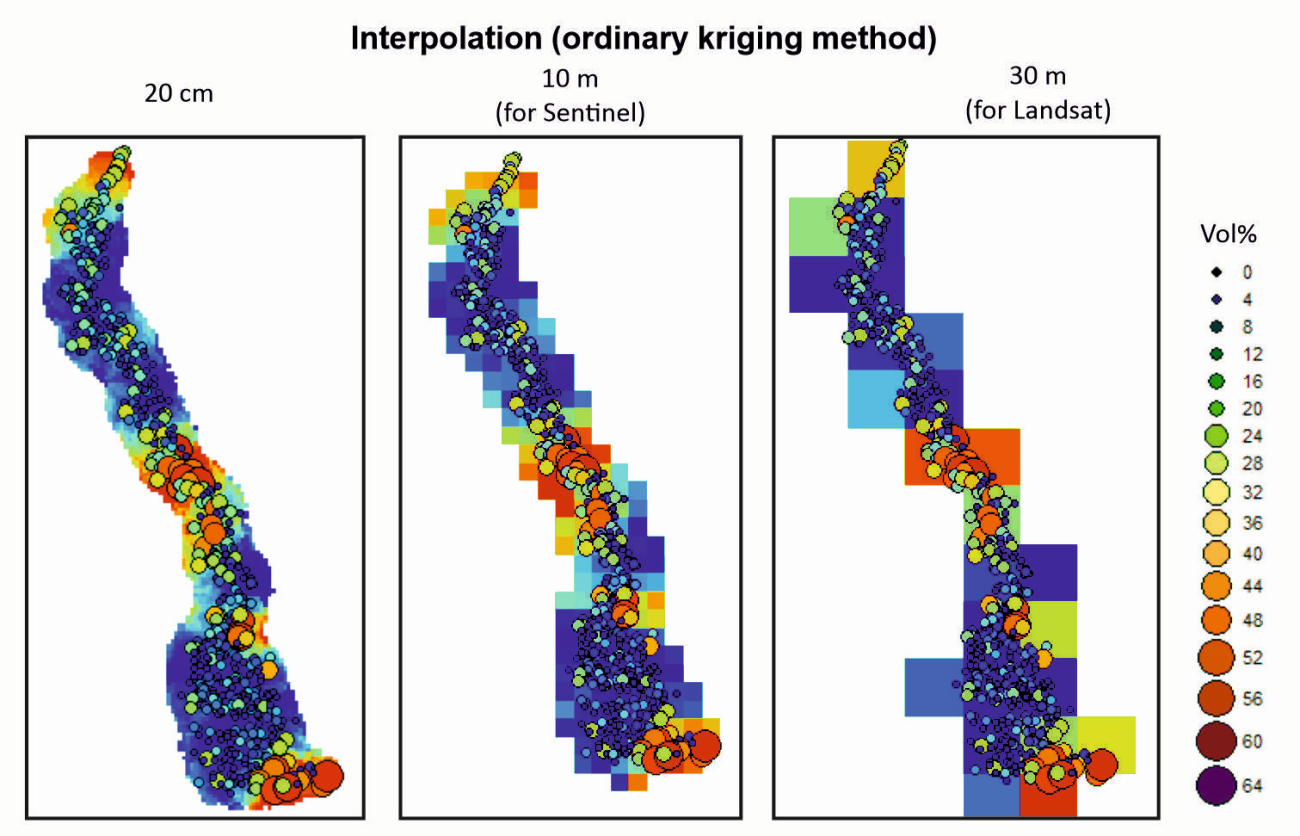- 1Institute of Geological Sciences, Polish Academy of Sciences, Wrocław, Poland (j.ciazela@twarda.pan.pl)
- 2Centro de Astrobiologia (CSIC-INTA), Planetary Geology and Habitability Department, Madrid, Spain
- 3Institute of Geology, Adam Mickiewicz University, Poznań, Poland
Sulfides are the most important group of ore minerals and are especially crucial for copper, silver, and gold. Despite the lack of direct evidence, sulfide ores are anticipated on Mars (Pirajno and van Kranendonk, 2005; West and Clarke, 2010). Rover and orbiter data along with geochemical modeling suggest the presence of pyrite (FeS2), marcasite (FeS2), and pyrrhotite (Fe1−xS) at the Martian surface (Ehlmann and Edwards, 2014). In addition, Martian meteorites show that the Martian crust is significantly enriched in chalcophile elements compared to the Martian mantle (Wang and Becker, 2017) and host a variety of magmatic and hydrothermal sulfides similar to that on Earth (Baumgartner et al., 2017; Lorand et al., 2018).
Infrared spectrometers orbiting Mars with high capabilities to use in mineralogical studies include CRISM (Compact Reconnaissance Imaging Spectrometer for Mars) operating in a wavelength range of 0.4–3.9 µm onboard Mars Reconnaissance Orbiter (MRO), OMEGA (Observatoire pour la Minéralogie, l’Eau, les Glaces et l’Activité; 0.4–5.1 µm) and PFS (Planetary Fourier Spectrometer; 1.3–45.0 µm) onboard Mars Express (MEX). To date, however, few works were able to localize sulfides from the orbit due to difficult interpretation caused by spectral interferences with common silicates, which are impossible to resolve without ground calibration (Horgan et al., 2014). To overcome this, we have mapped for pyrite content a 500 m x 100 m test field rich in pyrite within the Rio Tinto planetary field analog mining area in Spain for pyrite to compare the obtained results with remote sensing data from the Landsat 8, Sentinel-2, and ASTER satellites (see Ciazela M. et al. this session). The Rio Tinto area hosts the largest known volcanogenic massive sulfide deposits on Earth (Martin-Izard et al., 2015).
We have investigated 614 sites along a river bed (Fig. 1) located 3 m from each other. At each site, we investigated 5 random samples for pyrite content. The pyrite content was always estimated by 2 to 4 researchers, and the average for each site was computed. The average pyrite content in the entire investigated area is 7.0 vol.% (12.6 wt.%). We have observed two fields, 30 x 30 m, and 30 x 60 m, with average pyrite contents >50 wt.%, which should be suitable for its detection from the orbit, both with Sentinel-2 (field resolution of 10 m) and Landsat (30 m) (see Ciazela M. et al., this session).
Our results will help determine abundance thresholds for the detection of pyrite on Mars and identify its key spectral features for this detection.
Acknowledgments: This research is supported by the National Science Centre of Poland project OPUS19 no. 2020/37/B/ST10/01420 and Europlanet2024-research infrastructure grant no. 20-EPN2-020.

Figure 1. The ordinary kriging interpolation maps of pyrite content based on 614 sampling sites.
References:
Baumgartner R. J., Fiorentini M. L., Lorand J. P., Baratoux D., Zaccarini F., Ferrière L., Prašek M. K. and Sener K. (2017) The role of sulfides in the fractionation of highly siderophile and chalcophile elements during the formation of martian shergottite meteorites. Geochim. Cosmochim. Acta 210, 1–24.
Ehlmann B. L. and Edwards C. S. (2014) Mineralogy of the Martian Surface. Annu. Rev. Earth Planet. Sci., 291–315.
Horgan B. H. N., Cloutis E. A., Mann P. and Bell J. F. (2014) Near-infrared spectra of ferrous mineral mixtures and methods for their identification in planetary surface spectra. Icarus 234, 132–154.
Lorand J. P., Pont S., Chevrier V., Luguet A., Zanda B. and Hewins R. (2018) Petrogenesis of martian sulfides in the Chassigny meteorite. Am. Mineral. 103, 872–885.
Martin-Izard A., Arias D., Arias M., Gumiel P., Sanderson D. J., Castañon C., Lavandeira A. and Sanchez J. (2015) A new 3D geological model and interpretation of structural evolution of the world-class Rio Tinto VMS deposit, Iberian Pyrite Belt (Spain). Ore Geol. Rev. 71, 457–476.
Pirajno F. and van Kranendonk M. J. (2005) Review of hydrothermal processes and systems on Earth and implications for Martian analogues. Aust. J. Earth Sci. 52, 329–351.
Wang Z. and Becker H. (2017) Chalcophile elements in Martian meteorites indicate low sulfur content in the Martian interior and a volatile element-depleted late veneer. Earth Planet. Sci. Lett. 463, 56–68.
West M. D. and Clarke J. D. A. (2010) Potential martian mineral resources: Mechanisms and terrestrial analogues. Planet. Space Sci. 58, 574–582.
How to cite: Ciążela, J., Marciniak, D., Ciążela, M., Gomez, F., and Pieterek, B.: Towards prospecting ore deposits on Mars: geological mapping of the planetary field analog in the Rio Tinto mining area, Spain, Europlanet Science Congress 2022, Granada, Spain, 18–23 Sep 2022, EPSC2022-1119, https://doi.org/10.5194/epsc2022-1119, 2022.

